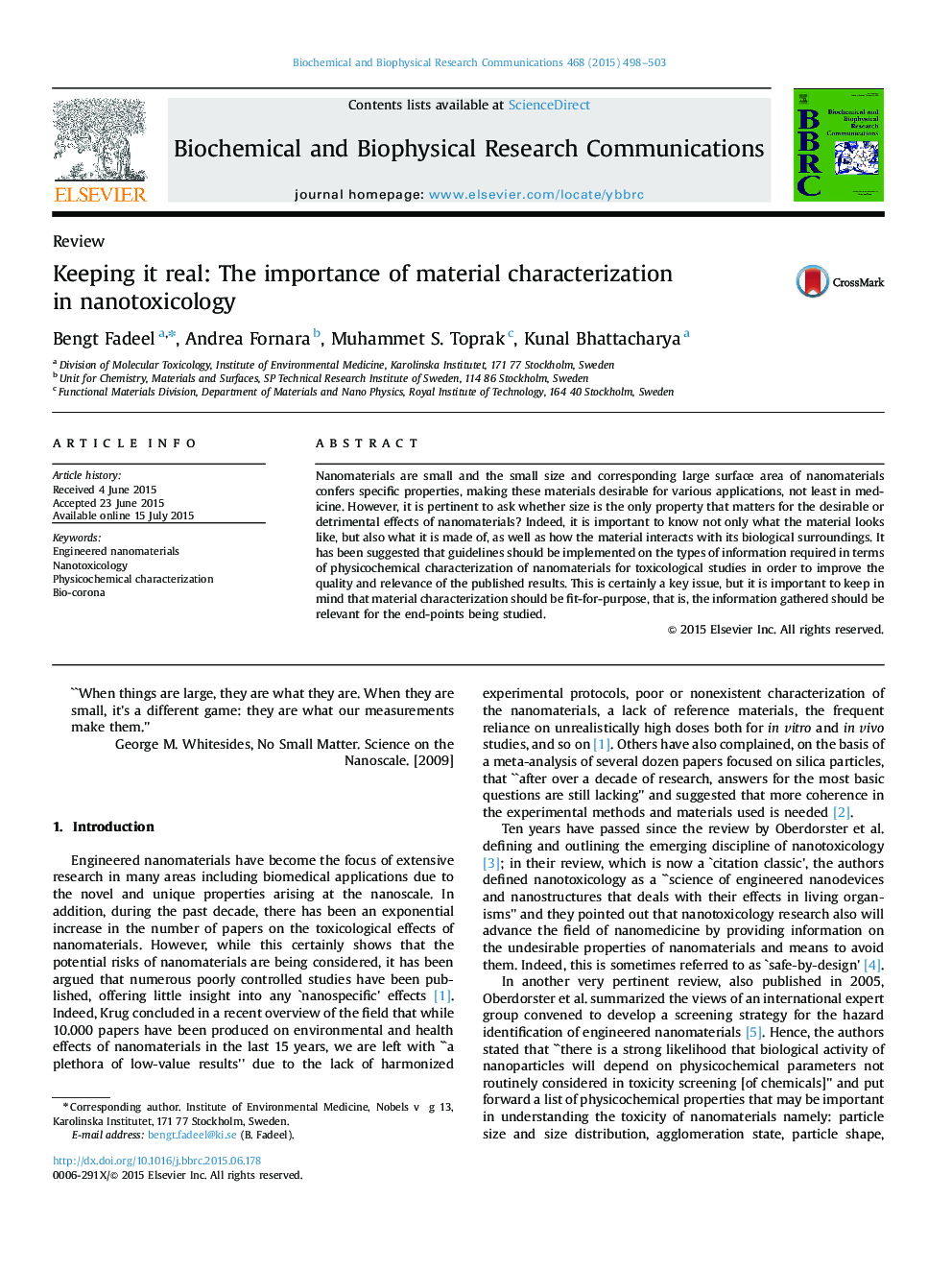| Article ID | Journal | Published Year | Pages | File Type |
|---|---|---|---|---|
| 1927932 | Biochemical and Biophysical Research Communications | 2015 | 6 Pages |
•More coherence is needed in the way that nanotoxicology is conducted.•Thorough physicochemical characterization is necessary in nanotoxicology.•The biological ‘identity’ of nanomaterials in a living system is also important.•Material characterization should be fit-for-purpose, and relevant for the study.•Categorization of nanomaterials based on functionality may support regulation.
Nanomaterials are small and the small size and corresponding large surface area of nanomaterials confers specific properties, making these materials desirable for various applications, not least in medicine. However, it is pertinent to ask whether size is the only property that matters for the desirable or detrimental effects of nanomaterials? Indeed, it is important to know not only what the material looks like, but also what it is made of, as well as how the material interacts with its biological surroundings. It has been suggested that guidelines should be implemented on the types of information required in terms of physicochemical characterization of nanomaterials for toxicological studies in order to improve the quality and relevance of the published results. This is certainly a key issue, but it is important to keep in mind that material characterization should be fit-for-purpose, that is, the information gathered should be relevant for the end-points being studied.
